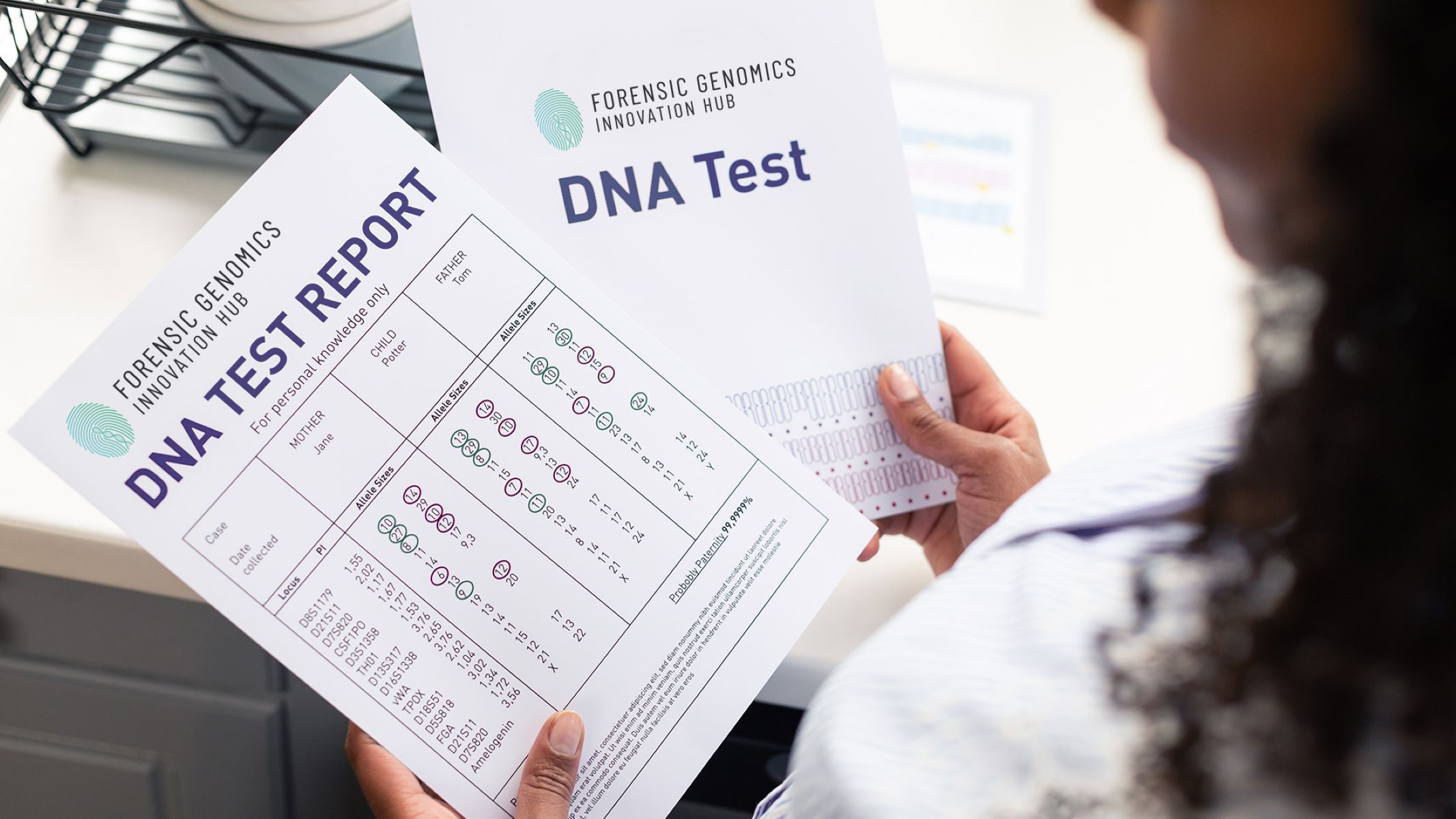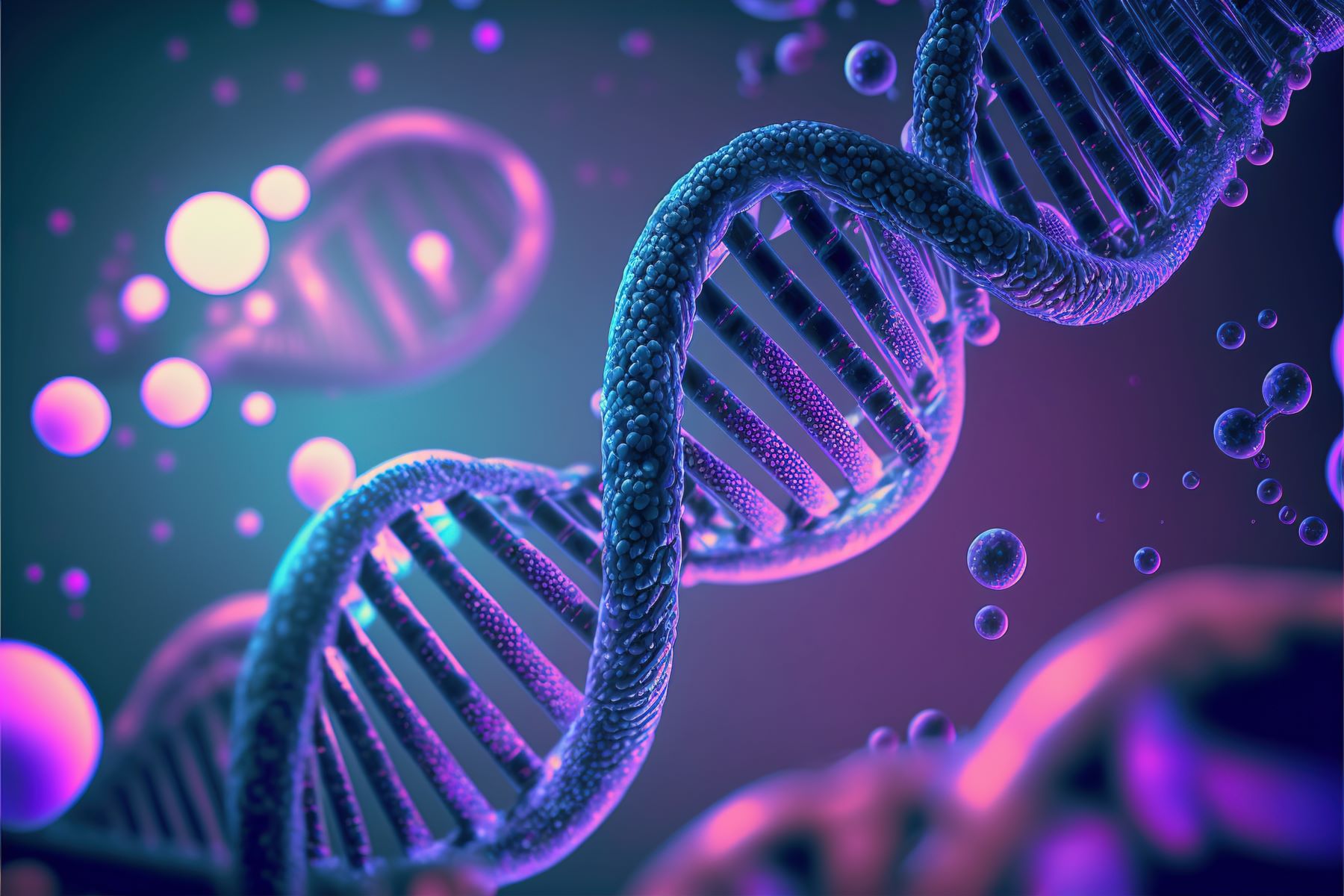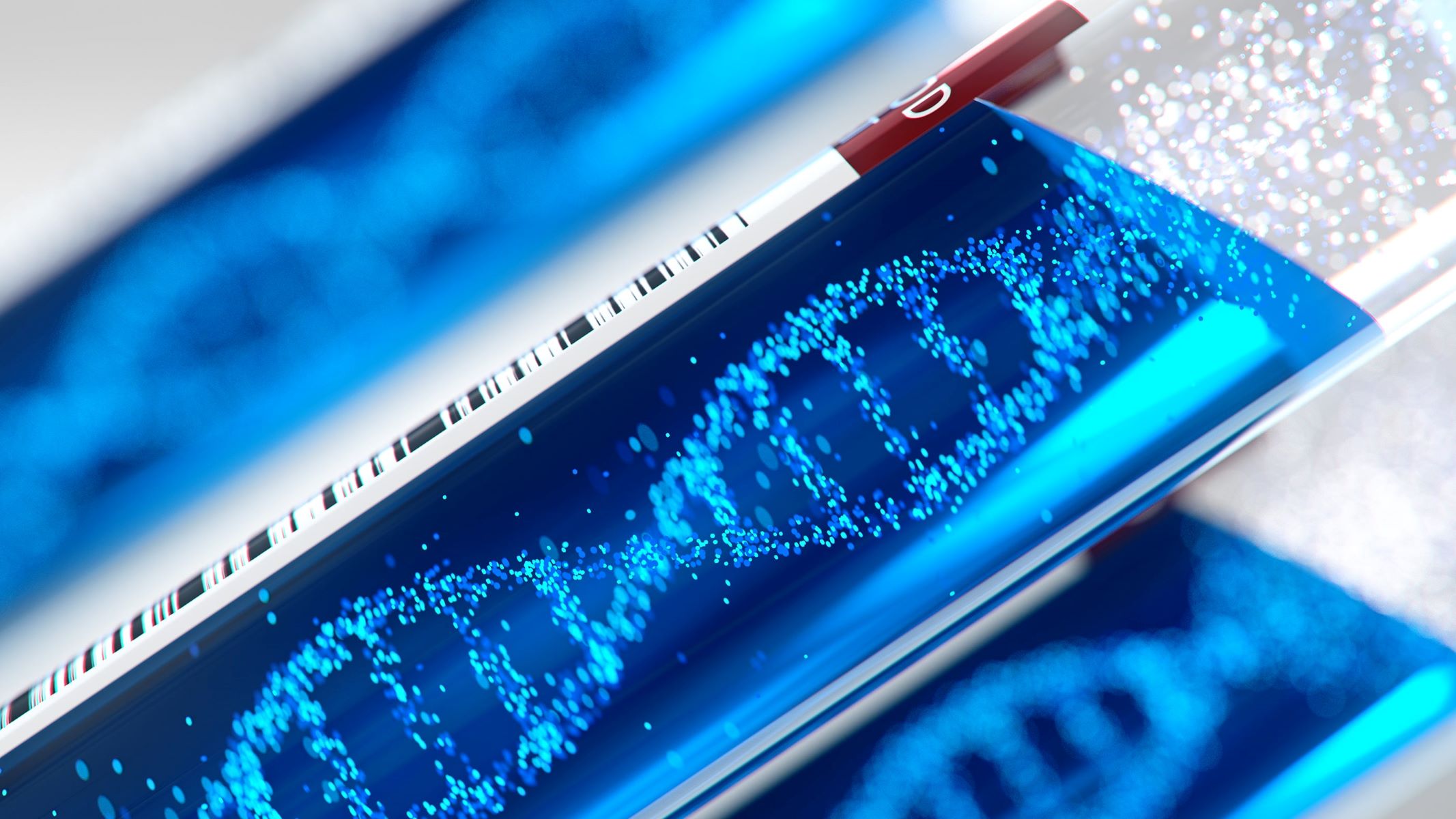Home>Science>The Incredible Role Of Mitochondrial DNA In Forensics


Science
The Incredible Role Of Mitochondrial DNA In Forensics
Published: February 11, 2024
Discover how mitochondrial DNA plays a crucial role in forensic science, aiding in the identification of individuals and solving criminal cases. Explore the fascinating applications and significance of mitochondrial DNA in the field of forensics.
(Many of the links in this article redirect to a specific reviewed product. Your purchase of these products through affiliate links helps to generate commission for Regretless.com, at no extra cost. Learn more)
Table of Contents
- Introduction
- The Structure and Function of Mitochondrial DNA
- Advantages of Using Mitochondrial DNA in Forensics
- Techniques for Analyzing Mitochondrial DNA
- Case Studies: The Impact of Mitochondrial DNA in Forensic Investigations
- Limitations and Challenges of Using Mitochondrial DNA in Forensics
- Future Directions and Potential Developments
- Conclusion
Introduction
Mitochondrial DNA (mtDNA) has revolutionized the field of forensic science, playing a pivotal role in solving crimes, identifying missing persons, and unraveling historical mysteries. Unlike nuclear DNA, which is inherited from both parents, mtDNA is exclusively maternally inherited, making it a valuable tool for tracing maternal lineages across generations. This unique genetic characteristic has positioned mtDNA as an indispensable asset in forensic investigations, where conventional DNA analysis may be limited or inconclusive.
The application of mtDNA in forensics has expanded our investigative capabilities, providing crucial insights into cases where nuclear DNA may be degraded or unavailable. By delving into the intricate world of mtDNA, forensic scientists can extract invaluable genetic information from hair, bones, teeth, and other challenging biological samples. This has significantly broadened the scope of forensic analysis, enabling the resolution of cases that were once deemed unsolvable.
Moreover, the stability of mtDNA, coupled with its abundance in cells, renders it a resilient and reliable source of genetic data. Even in cases where nuclear DNA may be compromised due to environmental factors or the passage of time, mtDNA remains remarkably intact, offering a lifeline in the quest for truth and justice. The robust nature of mtDNA has empowered forensic experts to tackle cold cases and historical inquiries with renewed hope and determination.
As we delve into the multifaceted realm of mtDNA in forensics, it becomes evident that this remarkable genetic material has transcended traditional boundaries, reshaping the landscape of investigative science. With its unparalleled ability to traverse generations and withstand the tests of time, mtDNA stands as a beacon of hope, illuminating the path towards unraveling the most enigmatic mysteries and delivering closure to those in search of answers.
The Structure and Function of Mitochondrial DNA
Mitochondrial DNA (mtDNA) is a small, circular, double-stranded molecule located within the mitochondria, the energy-producing powerhouses of the cell. Unlike nuclear DNA, which is housed in the cell's nucleus and inherited from both parents, mtDNA is exclusively maternally inherited. This unique genetic material plays a critical role in energy production and is essential for various cellular functions.
The structure of mtDNA consists of a non-coding control region, where replication and transcription processes are initiated, and coding regions that contain genes responsible for producing essential components of the electron transport chain. This chain is integral to the process of oxidative phosphorylation, through which cells generate adenosine triphosphate (ATP), the primary energy currency of the cell. The compact nature of mtDNA, coupled with its high copy number within each cell, ensures the efficient production of ATP, sustaining the energy demands of diverse cellular activities.
In addition to its pivotal role in energy metabolism, mtDNA serves as a valuable tool for tracing maternal lineages across generations. The absence of genetic recombination in mtDNA, a process that shuffles genetic material between maternal and paternal lineages, allows for the preservation of maternal genetic signatures over time. This characteristic makes mtDNA particularly useful in forensic investigations, where the identification of maternal relatives and the analysis of degraded or limited biological samples are paramount.
Furthermore, the unique features of mtDNA, such as its high mutation rate and susceptibility to damage from reactive oxygen species, contribute to its significance in evolutionary studies and population genetics. By examining variations in mtDNA sequences across different populations, scientists can gain insights into human migration patterns, demographic history, and evolutionary relationships.
In the realm of forensic science, the structural and functional attributes of mtDNA have unlocked a treasure trove of genetic information, enabling the resolution of complex cases and the identification of individuals in the absence of nuclear DNA. The remarkable stability and inheritance patterns of mtDNA have elevated it to a position of prominence in forensic investigations, offering a window into the past and a beacon of hope for those seeking answers.
Through a deep understanding of the structure and function of mtDNA, forensic scientists continue to harness its potential, unraveling mysteries, and bringing closure to families and communities touched by the profound impact of forensic science.
Advantages of Using Mitochondrial DNA in Forensics
Mitochondrial DNA (mtDNA) offers a myriad of advantages in forensic investigations, positioning it as a powerful tool in the quest for truth and justice. One of the primary advantages of mtDNA analysis lies in its ability to provide valuable genetic information even when nuclear DNA is compromised or unavailable. In cases where biological samples are degraded, scarce, or fragmented, mtDNA analysis can yield crucial insights, enabling the identification of individuals and the reconstruction of maternal lineages with remarkable precision.
Moreover, the exclusive maternal inheritance pattern of mtDNA makes it particularly valuable in scenarios where traditional DNA analysis may be inconclusive. By tracing maternal lineages across generations, mtDNA analysis facilitates the identification of maternal relatives, offering a unique avenue for familial and forensic investigations. This becomes especially significant in cases involving missing persons or unidentified remains, where conventional DNA analysis may yield limited results.
The high copy number of mtDNA within each cell further enhances its utility in forensic applications. Unlike nuclear DNA, which exists in two copies per cell, mtDNA is present in hundreds to thousands of copies, amplifying the chances of successful analysis, even from minute or degraded samples. This abundance of mtDNA increases the likelihood of obtaining viable genetic information, thereby expanding the scope of forensic analysis and bolstering the prospects of resolving challenging cases.
Furthermore, the stability of mtDNA, coupled with its resistance to degradation, renders it a resilient source of genetic material. Even in adverse environmental conditions or after prolonged intervals, mtDNA remains relatively intact, providing a valuable resource for forensic experts. This characteristic has propelled mtDNA to the forefront of cold case investigations, historical inquiries, and archaeological studies, breathing new life into cases that were once deemed unsolvable.
The unique advantages of mtDNA in forensic science have not only transformed investigative capabilities but have also paved the way for advancements in the field. By harnessing the power of mtDNA, forensic scientists continue to unravel mysteries, bring closure to families, and uphold the principles of truth and justice, reaffirming the indispensable role of mtDNA in the realm of forensic investigations.
Techniques for Analyzing Mitochondrial DNA
The analysis of mitochondrial DNA (mtDNA) involves a series of sophisticated techniques designed to extract, amplify, and sequence the genetic material, unveiling crucial insights for forensic investigations. One of the primary methods employed in mtDNA analysis is polymerase chain reaction (PCR), a powerful tool that enables the amplification of specific regions of mtDNA. PCR amplifies the target mtDNA sequences, even from minute or degraded samples, thereby increasing the amount of genetic material available for analysis.
Following PCR amplification, the next step in mtDNA analysis involves sequencing the amplified mtDNA segments. Sanger sequencing, a widely utilized method in forensic laboratories, facilitates the determination of the nucleotide sequence of the mtDNA fragments. This sequencing process provides a detailed blueprint of the genetic variations present in the mtDNA, allowing forensic experts to compare and analyze the sequences for identification and familial investigations.
In addition to traditional Sanger sequencing, next-generation sequencing (NGS) has emerged as a cutting-edge technique for mtDNA analysis. NGS platforms offer high-throughput sequencing capabilities, enabling the simultaneous analysis of multiple mtDNA samples with exceptional speed and precision. This advanced technology has revolutionized mtDNA analysis, enhancing the efficiency and scope of forensic investigations by expediting the sequencing process and expanding the depth of genetic information obtained from mtDNA samples.
Moreover, the application of restriction fragment length polymorphism (RFLP) analysis plays a significant role in mtDNA analysis, particularly in the context of forensic casework. RFLP analysis involves the digestion of mtDNA fragments with specific restriction enzymes, resulting in the generation of distinct fragment patterns that can be visualized and compared. This technique allows forensic scientists to discern variations in mtDNA sequences and determine genetic profiles, contributing to the identification and differentiation of individuals in forensic inquiries.
Furthermore, the integration of mitochondrial genome databases and bioinformatics tools has facilitated the interpretation and comparison of mtDNA sequences in forensic analyses. By leveraging these resources, forensic experts can cross-reference mtDNA profiles with existing databases, aiding in the identification of individuals and the establishment of maternal lineages.
Through the strategic utilization of these sophisticated techniques, forensic scientists can unlock the potential of mtDNA, unraveling genetic mysteries, and shedding light on the intricate tapestry of human lineage and identity. The application of these analytical methods underscores the pivotal role of mtDNA in forensic investigations, empowering the pursuit of truth and justice through the elucidation of genetic evidence.
Case Studies: The Impact of Mitochondrial DNA in Forensic Investigations
The application of mitochondrial DNA (mtDNA) in forensic investigations has yielded profound impacts, reshaping the landscape of investigative science and delivering justice in cases where conventional DNA analysis may falter. One notable case that exemplifies the pivotal role of mtDNA is the identification of the Romanov family remains, a historical inquiry that captivated the world with its compelling narrative and enduring mysteries.
In 1918, the Romanov family, including Tsar Nicholas II, Tsarina Alexandra, and their five children, were executed during the Russian Revolution. The whereabouts of their remains remained a subject of speculation and intrigue for decades, fueling numerous theories and controversies. In 1991, a mass grave was discovered in Yekaterinburg, Russia, believed to contain the remains of the Romanov family. However, due to the fragmented and deteriorated nature of the skeletal remains, traditional forensic analysis faced significant challenges in establishing positive identifications.
Enter mitochondrial DNA analysis, a groundbreaking approach that would unravel the enigma surrounding the Romanov family. Through meticulous mtDNA analysis, forensic experts compared the genetic profiles of the skeletal remains with living maternal relatives of the Romanovs. The exclusive maternal inheritance pattern of mtDNA provided a direct link to the maternal lineage, enabling the conclusive identification of the Romanov family members. The robust nature of mtDNA, coupled with its resilience to degradation, played a pivotal role in overcoming the obstacles posed by the fragmented remains, ultimately bringing closure to one of history's most enduring mysteries.
Another compelling case that underscores the impact of mtDNA in forensic investigations is the identification of the victims of the 9/11 terrorist attacks. In the aftermath of the devastating events, the recovery and identification of human remains presented formidable challenges, necessitating innovative forensic techniques. Amidst the chaos and devastation, mtDNA analysis emerged as a beacon of hope, offering a means to identify individuals from fragmented and commingled remains.
Forensic experts meticulously extracted mtDNA from recovered tissue samples and compared the genetic profiles with reference samples obtained from the victims' families. The unique attributes of mtDNA, including its high copy number and exclusive maternal inheritance, facilitated the positive identification of numerous victims, providing solace to grieving families and contributing to the comprehensive understanding of the human toll exacted by the tragic attacks.
These case studies exemplify the transformative impact of mtDNA in forensic investigations, transcending the limitations of traditional DNA analysis and illuminating the path towards truth and resolution. Through the application of mtDNA analysis, forensic science continues to unravel the most perplexing mysteries, bringing closure to the past and forging a path towards justice and healing.
Limitations and Challenges of Using Mitochondrial DNA in Forensics
While mitochondrial DNA (mtDNA) has significantly enhanced forensic investigations, it is essential to acknowledge the limitations and challenges associated with its utilization in the field of forensic science. One of the primary limitations of mtDNA analysis lies in its inability to provide individual-specific identifications. Due to the maternal inheritance pattern of mtDNA and the absence of genetic recombination, individuals within the same maternal lineage share identical or highly similar mtDNA sequences. This inherent characteristic restricts the discriminatory power of mtDNA analysis, particularly in cases where precise individual identifications are imperative.
Moreover, the interpretation of mtDNA evidence in forensic inquiries necessitates meticulous attention to detail and a comprehensive understanding of maternal lineage dynamics. The reliance on maternal relatives for reference samples introduces complexities in familial investigations, as the identification of suitable maternal lineage donors may pose challenges, especially in cases involving historical or ancient remains. Additionally, the potential for heteroplasmy, a phenomenon where an individual carries multiple mtDNA variants, adds a layer of complexity to mtDNA analysis, requiring sophisticated techniques to discern and interpret mixed mtDNA profiles accurately.
Furthermore, the prevalence of mtDNA haplogroups within specific populations presents challenges in the interpretation of mtDNA evidence, particularly in cases involving diverse or admixed populations. The assignment of individuals to broad haplogroups based on mtDNA sequences may limit the specificity of genetic identifications, necessitating supplementary genetic markers for comprehensive forensic analyses. Additionally, the susceptibility of mtDNA to degradation, albeit less pronounced than nuclear DNA, remains a notable challenge in cases where biological samples are exposed to environmental factors or prolonged intervals, necessitating stringent protocols for sample preservation and analysis.
The reliance on mtDNA as the sole source of genetic evidence in forensic investigations may also pose limitations in cases where nuclear DNA analysis could provide more definitive identifications. While mtDNA analysis offers resilience in the face of degraded or limited samples, the complementary use of nuclear DNA analysis can enhance the precision and robustness of genetic identifications, particularly in scenarios where both maternal and paternal lineages are of investigative significance.
Acknowledging these limitations and challenges underscores the importance of a comprehensive and nuanced approach to forensic investigations, wherein the strengths of mtDNA analysis are leveraged in conjunction with complementary forensic techniques. By navigating these challenges with precision and expertise, forensic scientists continue to harness the potential of mtDNA, unraveling genetic mysteries, and contributing to the pursuit of truth and justice in the realm of forensic science.
Future Directions and Potential Developments
The realm of mitochondrial DNA (mtDNA) in forensic science is poised for remarkable advancements and innovations, paving the way for future developments that will further elevate its significance in investigative inquiries. One of the key areas of potential development lies in the refinement and expansion of mtDNA databases, encompassing diverse global populations and subpopulations. By compiling comprehensive mtDNA databases that capture the genetic diversity of various ethnic groups, forensic scientists can enhance the precision and inclusivity of mtDNA analysis, facilitating more accurate genetic identifications and lineage attributions across diverse populations.
Furthermore, the integration of advanced sequencing technologies and bioinformatics tools holds immense promise in shaping the future of mtDNA analysis. Next-generation sequencing (NGS) platforms continue to evolve, offering enhanced throughput, accuracy, and cost-effectiveness. The continued refinement of NGS methodologies for mtDNA analysis will enable forensic laboratories to expedite sequencing processes, analyze complex mtDNA mixtures, and extract deeper insights from genetic data. Moreover, the integration of artificial intelligence and machine learning algorithms in mtDNA analysis presents a frontier of potential developments, streamlining data interpretation, and enhancing the efficiency of genetic comparisons.
In the pursuit of future directions, the exploration of mitochondrial epigenetics, particularly mitochondrial DNA methylation patterns, emerges as a compelling avenue for potential developments. The elucidation of mtDNA methylation profiles and their implications in forensic investigations holds promise in refining age estimation techniques, discerning tissue-specific DNA signatures, and unraveling the impact of environmental exposures on mtDNA. By delving into the epigenetic landscape of mtDNA, forensic scientists may uncover novel avenues for genetic analysis and interpretation, expanding the horizons of forensic inquiries.
Moreover, the convergence of mtDNA analysis with emerging forensic disciplines, such as forensic genealogy and phenotypic profiling, presents an exciting trajectory for future developments. The integration of mtDNA data with genealogical databases and phenotypic prediction algorithms offers the potential to reconstruct comprehensive genetic profiles, trace distant familial connections, and infer physical characteristics from mtDNA signatures. This holistic approach to forensic investigations holds promise in broadening the scope of genetic identifications, shedding light on ancestral lineages, and providing multidimensional insights into the individuals under scrutiny.
As we embark on the horizon of future developments, it is evident that mitochondrial DNA will continue to chart new frontiers in forensic science, transcending existing boundaries, and reshaping the landscape of investigative inquiries. The convergence of technological advancements, interdisciplinary collaborations, and innovative methodologies heralds a future where mtDNA stands as a beacon of precision, resilience, and enlightenment, propelling forensic science into a realm of unprecedented possibilities and discoveries.
Conclusion
In conclusion, the remarkable role of mitochondrial DNA (mtDNA) in forensic science is unequivocally evident, as it has transcended traditional boundaries and reshaped the landscape of investigative inquiries. The unique attributes of mtDNA, including its exclusive maternal inheritance, resilience to degradation, and high copy number within cells, have positioned it as an indispensable asset in forensic investigations. The stability and inheritance patterns of mtDNA have empowered forensic experts to tackle cold cases, historical inquiries, and contemporary criminal investigations with renewed hope and determination.
The application of mtDNA in forensic investigations has not only revolutionized investigative capabilities but has also delivered closure to families and communities touched by the profound impact of forensic science. From the identification of historical figures, such as the Romanov family, to the resolution of modern-day criminal cases, mtDNA has played a pivotal role in unraveling genetic mysteries and bringing truth and justice to the forefront.
While acknowledging the limitations and challenges associated with mtDNA analysis, it is imperative to recognize the potential for future developments and innovations in the field. The refinement of mtDNA databases, integration of advanced sequencing technologies, exploration of mitochondrial epigenetics, and convergence with emerging forensic disciplines herald a future where mtDNA analysis stands as a beacon of precision, resilience, and enlightenment.
As forensic science continues to evolve, the multifaceted realm of mtDNA in forensic investigations will undoubtedly remain at the forefront of advancements, propelling the pursuit of truth and justice into a realm of unprecedented possibilities and discoveries. The enduring impact of mtDNA in forensic science serves as a testament to the resilience of human ingenuity and the unwavering commitment to unraveling genetic mysteries, delivering closure, and upholding the principles of truth and justice.
In essence, the incredible role of mtDNA in forensic science stands as a testament to the enduring pursuit of truth and justice, as it continues to illuminate the path towards unraveling the most enigmatic mysteries and delivering closure to those in search of answers.














